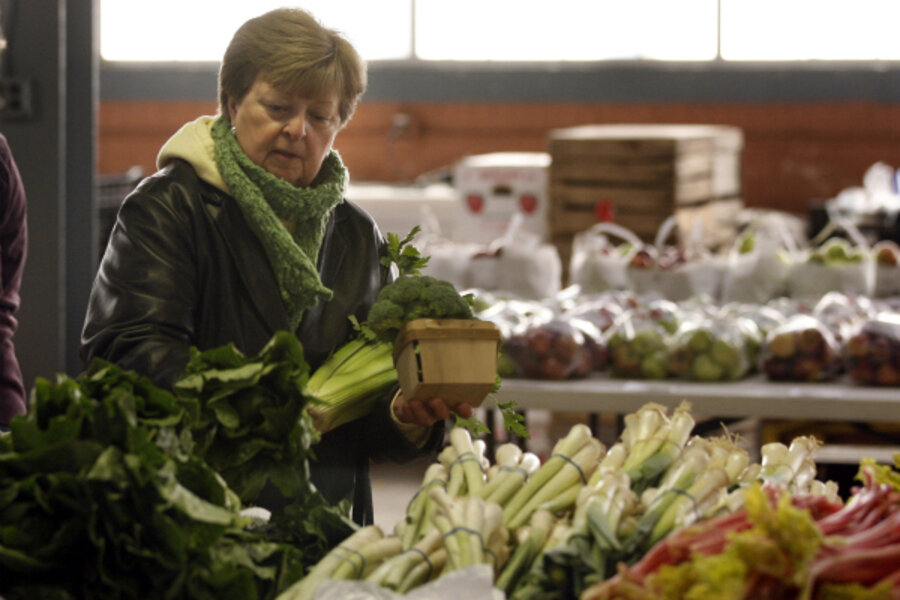A double win for fresh food
Loading...
Detroit is home to the longest-running public farmers’ market in the country, as well as to many low-income residents who receive government aid in purchasing food. But until recently, those worlds didn’t really meet: of $361 million in SNAP benefits (Supplemental Nutrition Assistance Program, formerly known as food stamps) spent in the city in 2010, less than $200,000 went to farmers’ markets.
A new program is working to close the gap, in Detroit and beyond: to increase access to fresh, healthy food for low-income residents of inner cities and “food deserts” while simultaneously strengthening the local economy and improving the livelihoods of farmers and rural communities.
The program, called Double Up Food Bucks (DUFB), is a project of the nonprofit Fair Food Network. It’s a simple idea: SNAP shoppers use their benefits at a participating farmers’ market and receive tokens for an equal amount to purchase any Michigan-grown fruit or vegetable at the market. In effect, food dollars spent at farmers’ markets are doubled, up to $20 per market day. By spending $20 of SNAP benefits at the farmers’ market, the shopper comes home with $40 worth of healthy, fresh, regionally grown produce.
The program started as a pilot project in Detroit, but it’s now gone statewide, allowing Michigan residents to double the value of their SNAP purchases at 55 farmers’ markets. Since the 2011 program season started on June 1, more than 22,000 people have taken advantage of it – one-third of them using their SNAP benefits at a farmers’ market for the first time ever, creating an entirely new cadre of shoppers at the markets and supporters of the local food economy. Shoppers have already used $350,938 of SNAP benefits at these markets and have received $311,076 in DUFB matching tokens – more than tripling the SNAP income of farmers’ markets the year before.
Thus far, the Fair Food Network has supported the program almost exclusively with philanthropic dollars (including support from over 30 local and national foundations and corporations, particularly George Soros’ Open Society, which chose DUFB to be beneficiary of their Special Fund for Poverty Alleviation).
But DUFB has demonstrated the feasibility and effectiveness of using incentives to encourage lower-income families to purchase healthier food and support the local food economy and farmers. As we create our food and farm policy for the future with the reauthorization of the Farm Bill in 2012, we have an opportunity to provide public funding for this very successful approach to nutrition and rural economic development.
Oran B. Hesterman, Ph.D., wrote this article for YES! Magazine, a national, nonprofit media organization that fuses powerful ideas with practical actions.
• This article originally appeared at YES! Magazine.
• Sign-up to receive a weekly selection of practical and inspiring Change Agent articles by clicking here.






